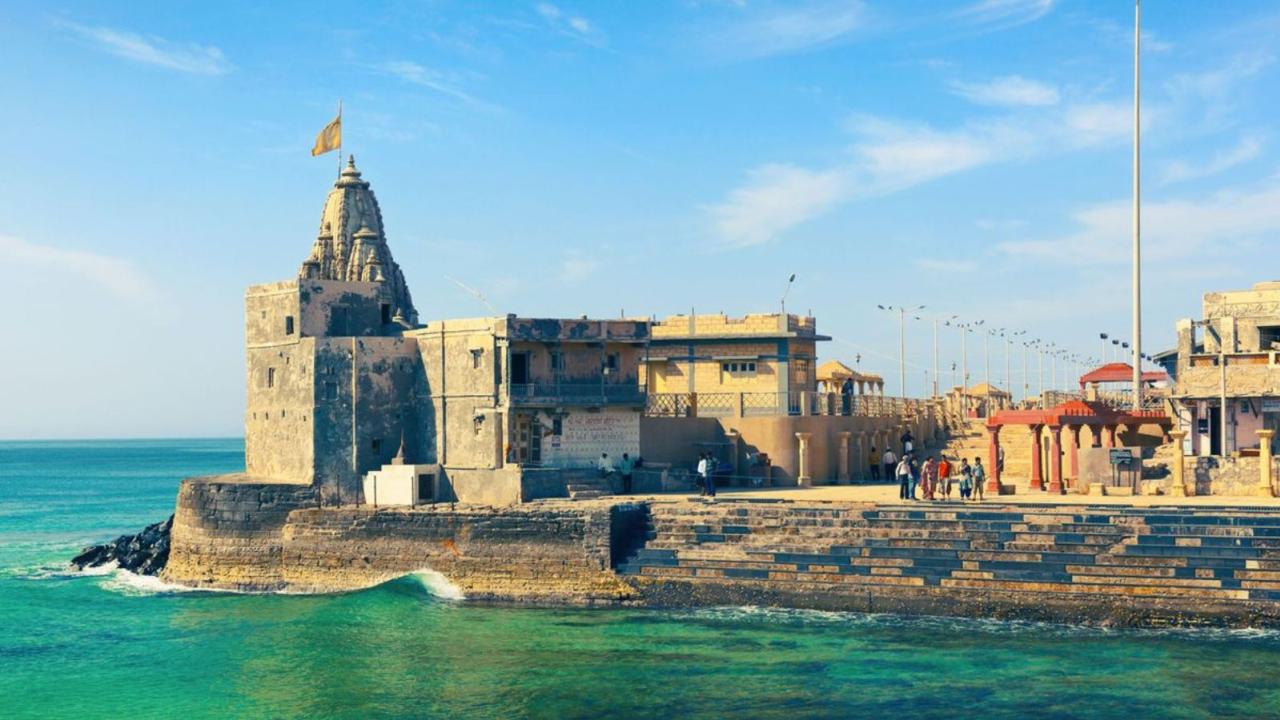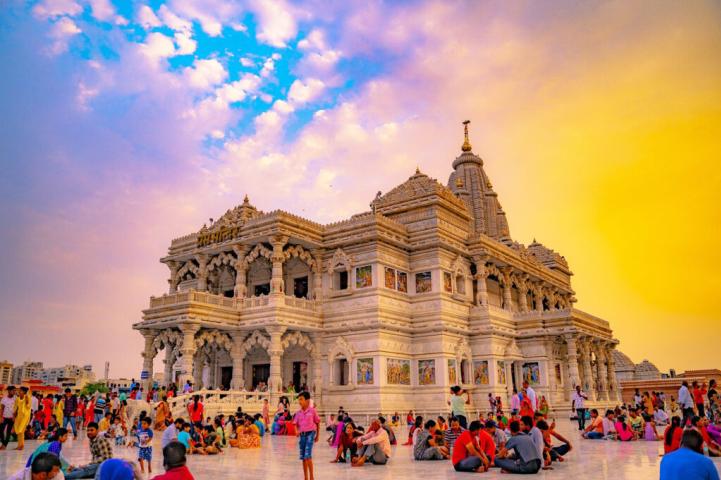Dwarkadhish Temple, also known as Jagat Mandir, is one of the most revered temples in India. Located in the ancient city of Dwarka in Gujarat, this temple holds immense significance for Hindus. Dedicated to Lord Krishna, the temple is a symbol of faith, devotion, and history, making it a must-visit for pilgrims and tourists alike. But what makes Dwarkadhish Mandir so unique? Let’s dive deep into its history, architecture, and spiritual relevance.
The Historical Significance of Dwarkadhish Mandir
The Dwarkadhish Temple is believed to have been established by Lord Krishna’s grandson, Vajranabh, over 2,500 years ago. It stands as one of the four sacred Char Dham pilgrimage sites in India, alongside Badrinath, Rameshwaram, and Puri. This historical connection to Lord Krishna has drawn millions of devotees over centuries, who come to pay homage to their beloved deity.
The Location of Dwarkadhish Temple
Located on the western tip of the Saurashtra peninsula, the temple sits near the Arabian Sea. Dwarka itself holds a special place in Indian mythology, as it is considered the ancient kingdom of Lord Krishna. This coastal city is also one of the seven oldest cities in India, adding layers of historical and mythological importance to the temple’s location.
Architectural Beauty of Dwarkadhish Temple
One of the most captivating aspects of the Dwarkadhish Mandir is its architectural grandeur. Built in the Chalukya >
Main Features and Sculptures
The temple’s exterior is adorned with detailed sculptures depicting scenes from the Mahabharata, Ramayana, and other ancient texts. The Shikhar (spire) of the temple towers above, symbolizing a spiritual connection between heaven and earth. Its flag, changed five times a day, is another notable feature, believed to represent the temple’s divine energy.
Religious Significance of Dwarkadhish Mandir
Dwarkadhish Temple is not just an architectural masterpiece but also a vital center of Hindu devotion. The temple is dedicated to Lord Krishna, who is revered as the eighth incarnation of Lord Vishnu. Devotees from around the world come to the temple to seek blessings, especially during major Hindu festivals like Janmashtami, the birth anniversary of Krishna.
Daily Rituals and Practices at the Temple
The daily rituals at Dwarkadhish Temple follow a strict schedule, beginning with the Mangala Aarti at dawn and ending with the Shayana Aarti at night. Devotees can participate in these ceremonies, which include chanting of hymns, offerings of flowers, and special prayers. These rituals bring devotees closer to their spiritual self and offer a glimpse into the life of Lord Krishna.
Pilgrimage and the Char Dham Yatra
Dwarkadhish Temple is a crucial part of the Char Dham Yatra, a pilgrimage to the four sacred abodes of God. Hindus believe that visiting these four temples cleanses the soul and leads one closer to moksha (liberation). The journey to Dwarka, with its coastal charm and spiritual aura, is a transformative experience for pilgrims.
Best Time to Visit Dwarkadhish Temple
The ideal time to visit Dwarkadhish Temple is between October and March when the weather is pleasant. The temple sees a huge influx of visitors during festivals, especially Janmashtami, which is celebrated with grand fervor. The temple’s spiritual energy is at its peak during these times, offering an unforgettable experience for devotees.
How to Reach Dwarkadhish Temple
Dwarkadhish Temple is easily accessible by air, rail, and road. The nearest airport is Jamnagar, about 137 km away, while the Dwarka railway station connects it to major cities. For road travelers, Dwarka is well-linked with regular bus services. Once in Dwarka, accommodations range from budget-friendly hotels to more luxurious stays.
The Legend of Lord Krishna and Dwarka
According to Hindu mythology, Dwarka was the capital of Lord Krishna’s kingdom after he moved from Mathura. It is said that Krishna constructed the city using his divine powers, and the city eventually submerged into the sea after his departure. The temple stands as a reminder of Krishna’s reign and the glory of ancient Dwarka.
Tourist Attractions Around Dwarkadhish Temple
Beyond the Dwarkadhish Mandir, there are several other spiritual and tourist attractions in Dwarka. Some popular sites include:
- Rukmini Devi Temple: Dedicated to Krishna’s queen, Rukmini, this temple is known for its intricate carvings.
- Gomti Ghat: Located near the temple, devotees take a holy dip in the Gomti River, which is believed to cleanse sins.
- Bet Dwarka: An island off the coast, said to be the original residence of Lord Krishna, accessible by boat.
Unique Traditions of Dwarkadhish Temple
One of the most unique traditions at the temple is the flag-changing ceremony, which takes place five times a day. This tradition is carried out with great devotion, and it is believed that witnessing the ceremony brings good fortune. Special pujas and offerings are also conducted during auspicious times, adding to the temple's charm.
Cultural Impact of Dwarkadhish Temple
Dwarkadhish Temple has deeply influenced the local culture and traditions of Dwarka. The city revolves around the temple, and its festivals, rituals, and art are closely tied to Krishna’s teachings. Visitors can experience this rich cultural heritage in every corner of Dwarka.
Conservation Efforts for Dwarkadhish Mandir
The temple’s trust has undertaken various efforts to preserve and maintain the historical integrity of the structure. With growing numbers of visitors, conservation is crucial to protect the temple’s sanctity and beauty for future generations.
Conclusion
Dwarkadhish Temple is not just a place of worship but a living testament to India’s rich spiritual and cultural heritage. Whether you are a pilgrim or a traveler, visiting this sacred temple offers a unique blend of devotion, history, and architectural wonder. It’s a journey that brings you closer to the divine while offering a deep connection to India’s past.
FAQs
What is the best time to visit Dwarkadhish Temple?
- The ideal time is between October and March, with Janmashtami being the most celebrated festival.
Is photography allowed inside the temple?
- No, photography is not permitted inside the temple premises.








